Tailor-made Ao dai from Trach Xa (Hoa Lam Commune, Ung Hoa District, Hanoi) has become more popular in the market and received much praise from domestic and foreign customers thanks to the preservation of the traditional village and a chain of stores in downtown Hanoi.
We went to the house of Nghiem Van Dat, head of the Trach Xa Tailor Cooperative, to learn about the traditional craft of making Ao dai in the village. Nguyen Thi Sen, a concubine of King Dinh Tien Hoang, was the first tailor in Trach Xa. She learnt sewing and taught the imperial maids about tailoring. After leaving the palace with her children, she returned to Trach Xa and taught the villagers how to sew. As time went by, more and more families have learned the craft, keeping it alive for many generations. It has become the career of the whole area.
Involved in traditionaltailoring for more than 30 years, Dat believes that a beautiful Ao dai requires careful selection of forms, colours, fabric and decorating patterns. However, the key characteristic of Trach Xa Ao dai is its slender and willowy flaps. To make such an Ao dai, the tailor must be very careful in measuring and cutting the fabric as well as in sewing so that the sewing lines are tiny and the form is kept intact. In the past, all procedures were done manually so the number of Ao dai made daily was small. Now, with the assistance of machines, each day there are 30-40 products completed to meet customers’ demands.

Nghiem Van Dat, President of the Trach Xa Traditional Ao dai Cooperative, still maintains his family’s traditional craft.
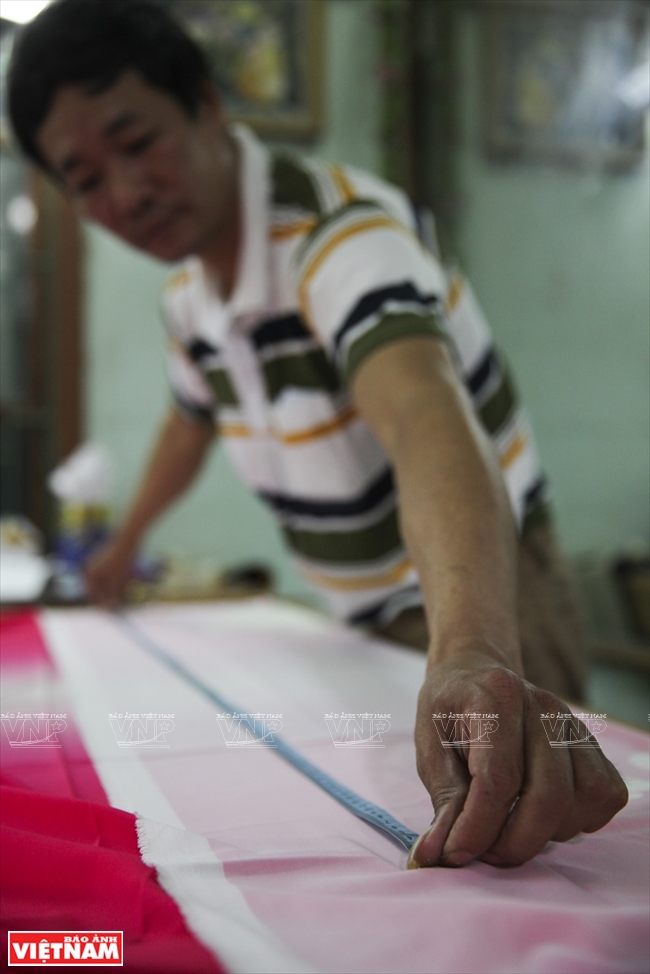
In order to make beautiful Ao dai, Trach Xa tailors have to be very careful in measuring.
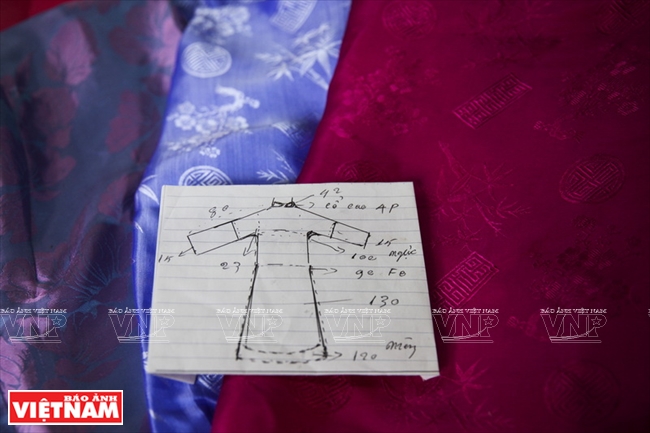
Recently, new forms of Ao dai have been introduced to meet customers’ demands.
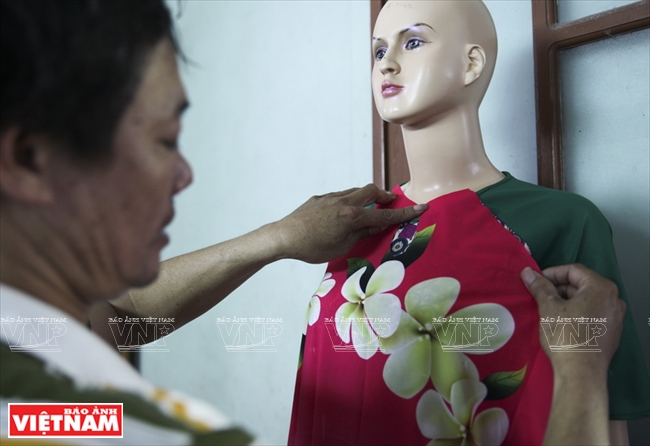
With experience, tailors can easily make Ao dai with given figures.
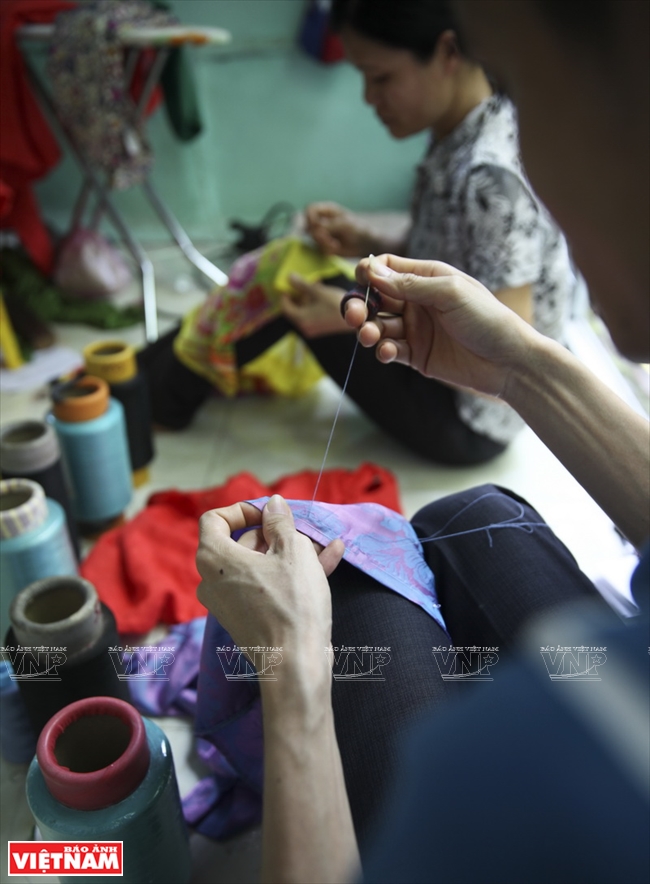
Trach Xa tailors use embroidery to decorate Ao dai.

After embroidering, if the flaps are affected, the tailor will redo the embroidery.
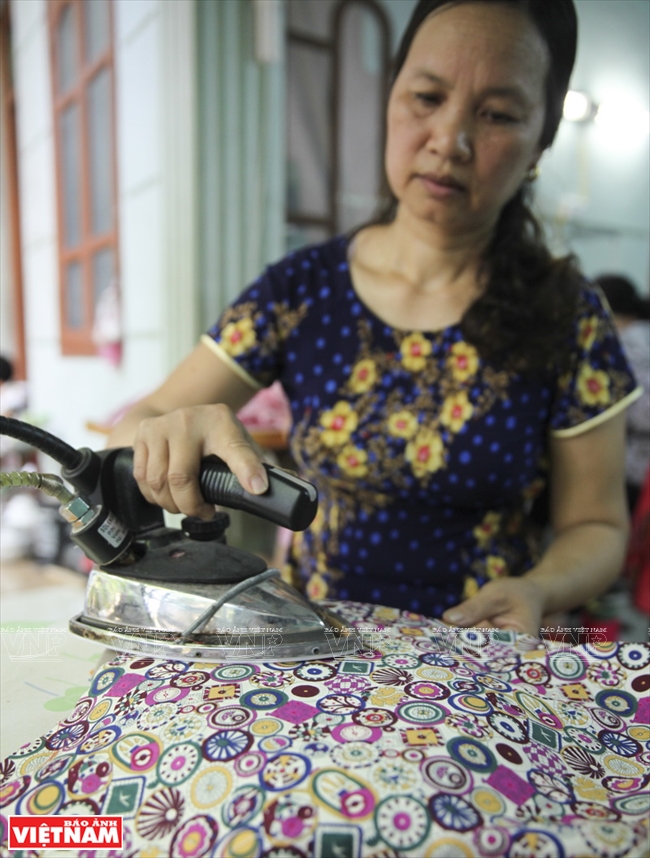
Completed Ao dai are ironed before displaying.
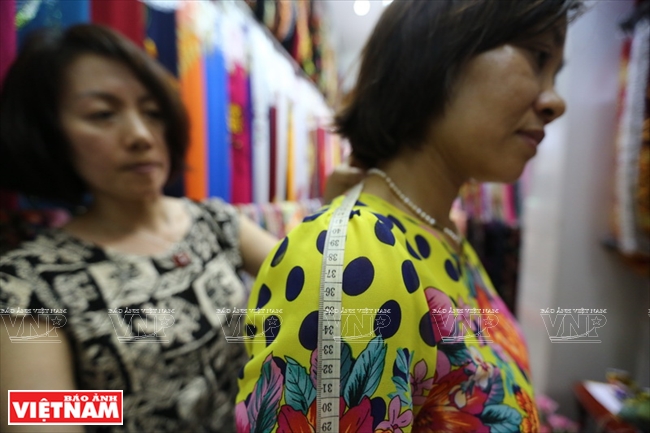
Nguyen Thanh Binh, owner of Vinh Hao Ao dai store (Cau Go Street, Hanoi), still uses traditional
techniques to make Ao dai.

She only has to look at the customers to decide the form of Ao dai suitable for them.
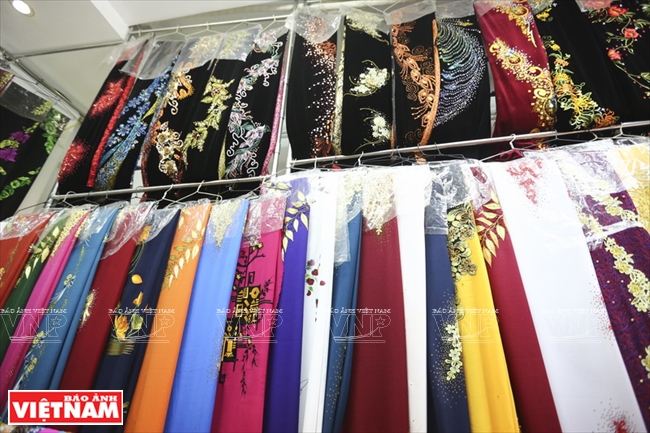
Ao dai stores of Trach Xa villagers on Hanoi streets attract a lot of customers. |
According to the statistics of the People’s Committee of Hoa Lam Commune, at the present time about 70% of the households in Trach Xa are involved in Ao dai making, with about 600 labourers who earn an average of 5-6 million dong/month. With the support of Ung Hoa District, the Trach Xa Tailor Cooperative was established in 2011 to develop the brand name of Ao dai Trach Xa with 27 members. From then on, the cooperative has conducted many activities to advertise the traditional craft of making Ao dai to foreign and domestic customers through participating in the Festivals of Ao dai in 2011 and 2012, Hanoi Traditional Craft Village Tourism and Culture Festival 2015 and the Price Stabilisation Program held annually in Ung Hoa District. This has created a new image of the village and given potential for the village.
With their experience in making Ao dai, many Trach Xa villagers have moved to downtown Hanoi and opened Ao dai stores. Most Ao dai stores on Luong Van Can, Kham Thien, Cau Go, Hue streets were opened by Trach Xa villagers.
We visited Vinh Hao Ao dai store at 82 Cau Go Street (Hanoi) owned by Nguyen Thanh Binh. The shop owners said that her family has a history of more than 70 years of making Ao dai, starting from her great grandparents. She was taught the craft from her father, who learned from his ancestors. She still utilises traditional techniques to create Ao dai. From just a look at the customers, she can decide which form of Ao dai is suitable for them. This is also the reason that makes her store popular despite a large number of Ao dai stores in Hanoi.
By maintaining the traditional craft and developing stores in downtown Hanoi, people in Trach Xa have made their Ao dai in demand for not only the domestic market but also in foreign countries such as the US, Australia, Thailand and Sweden.
Story: Ngan Ha – Photos: Khanh Long